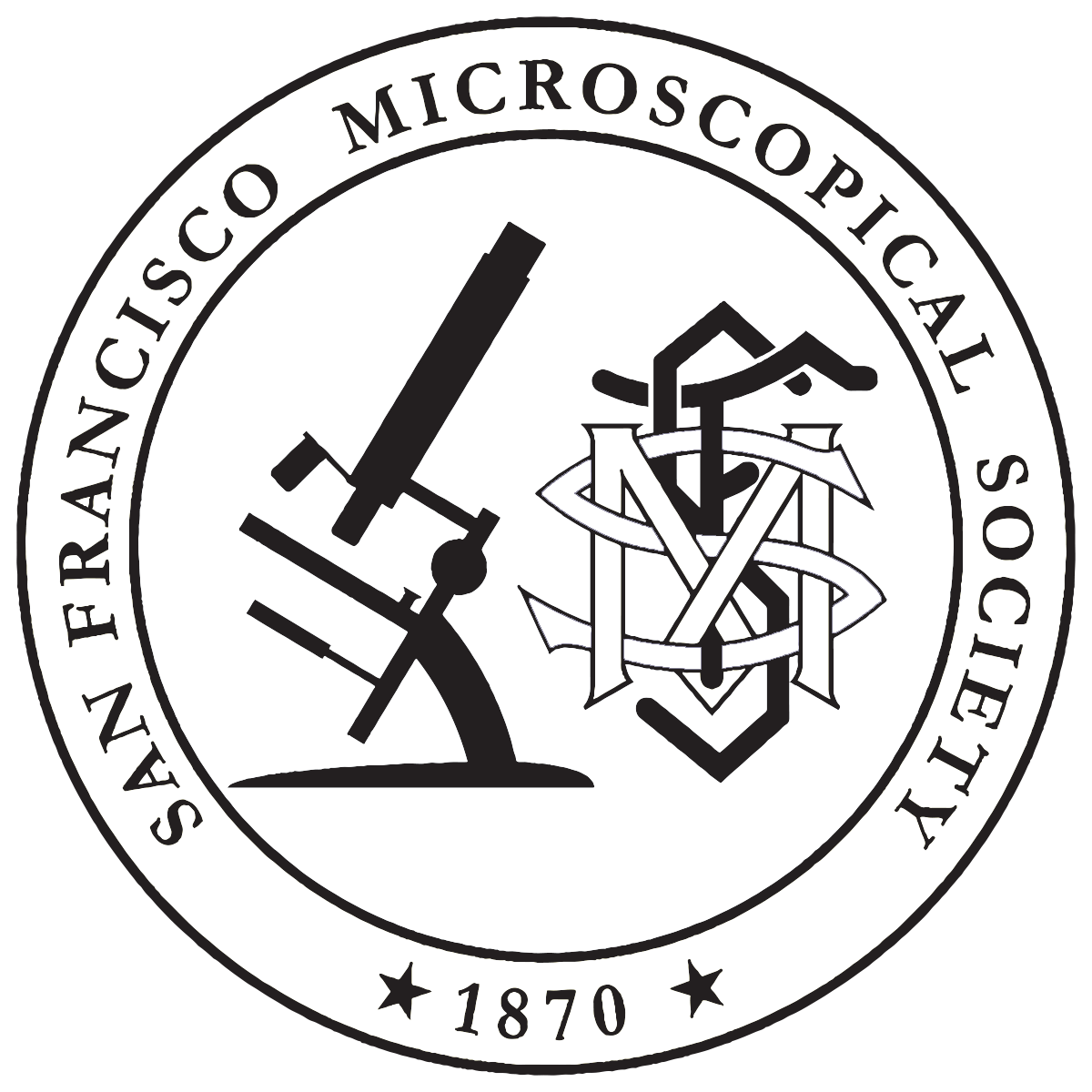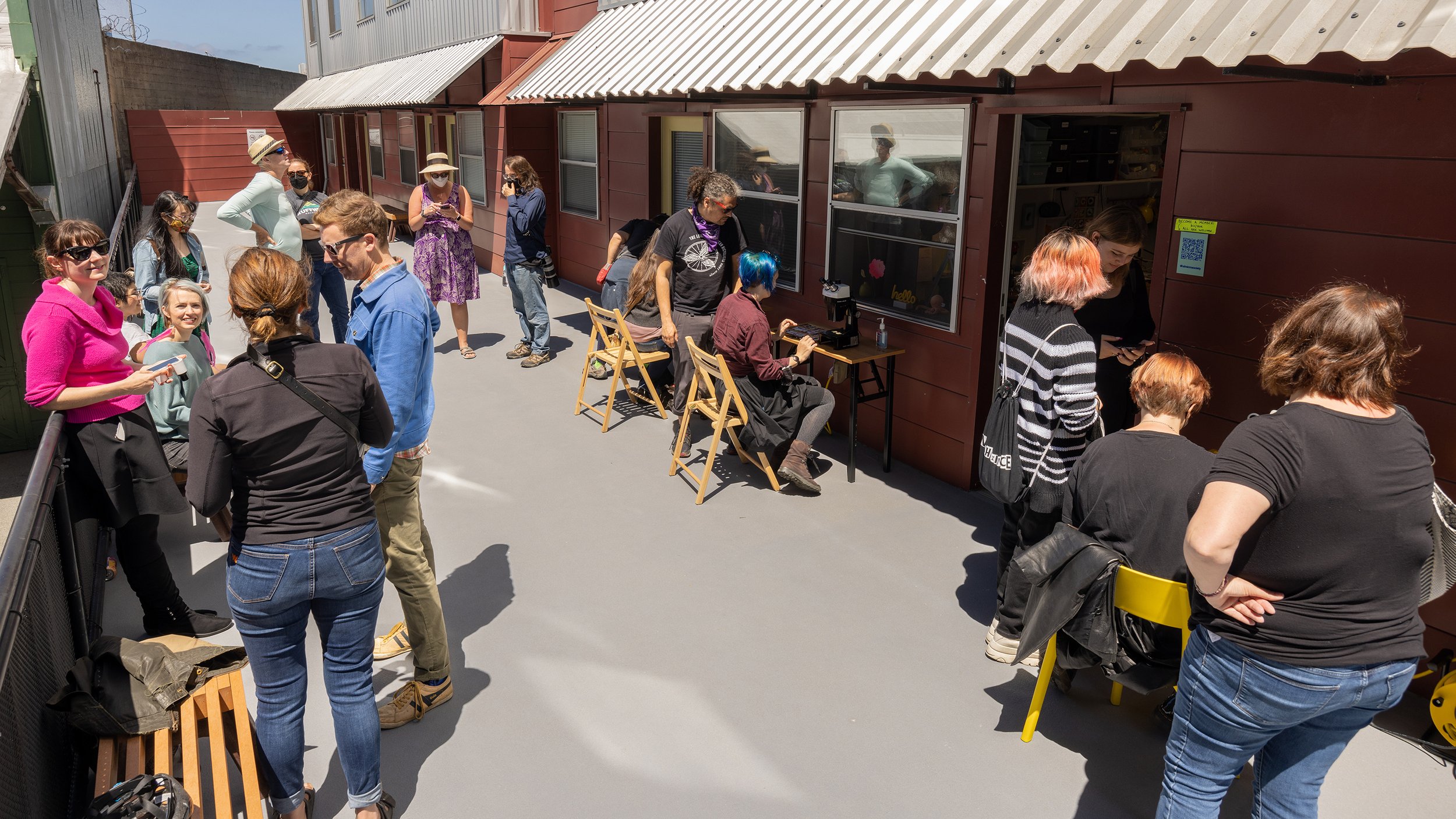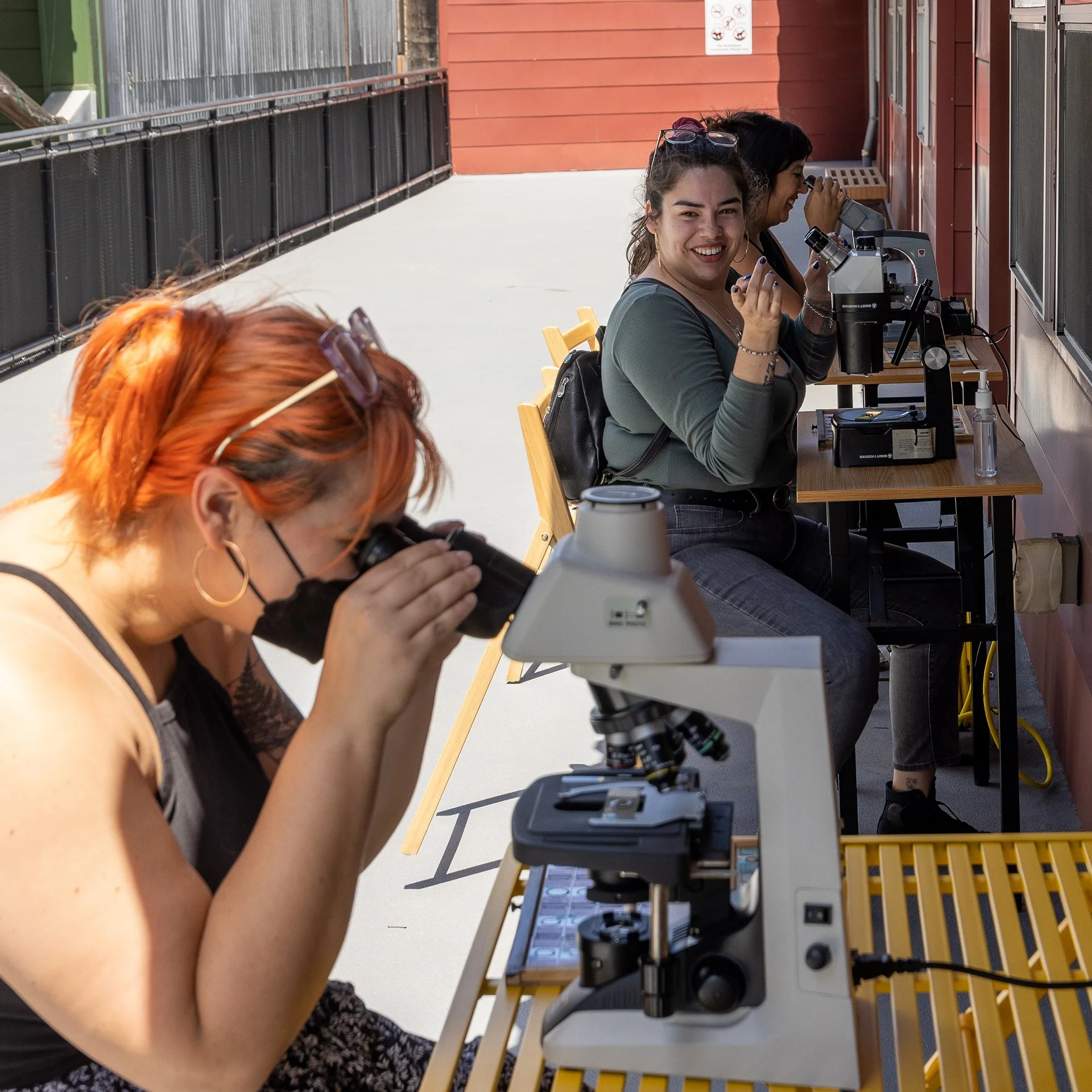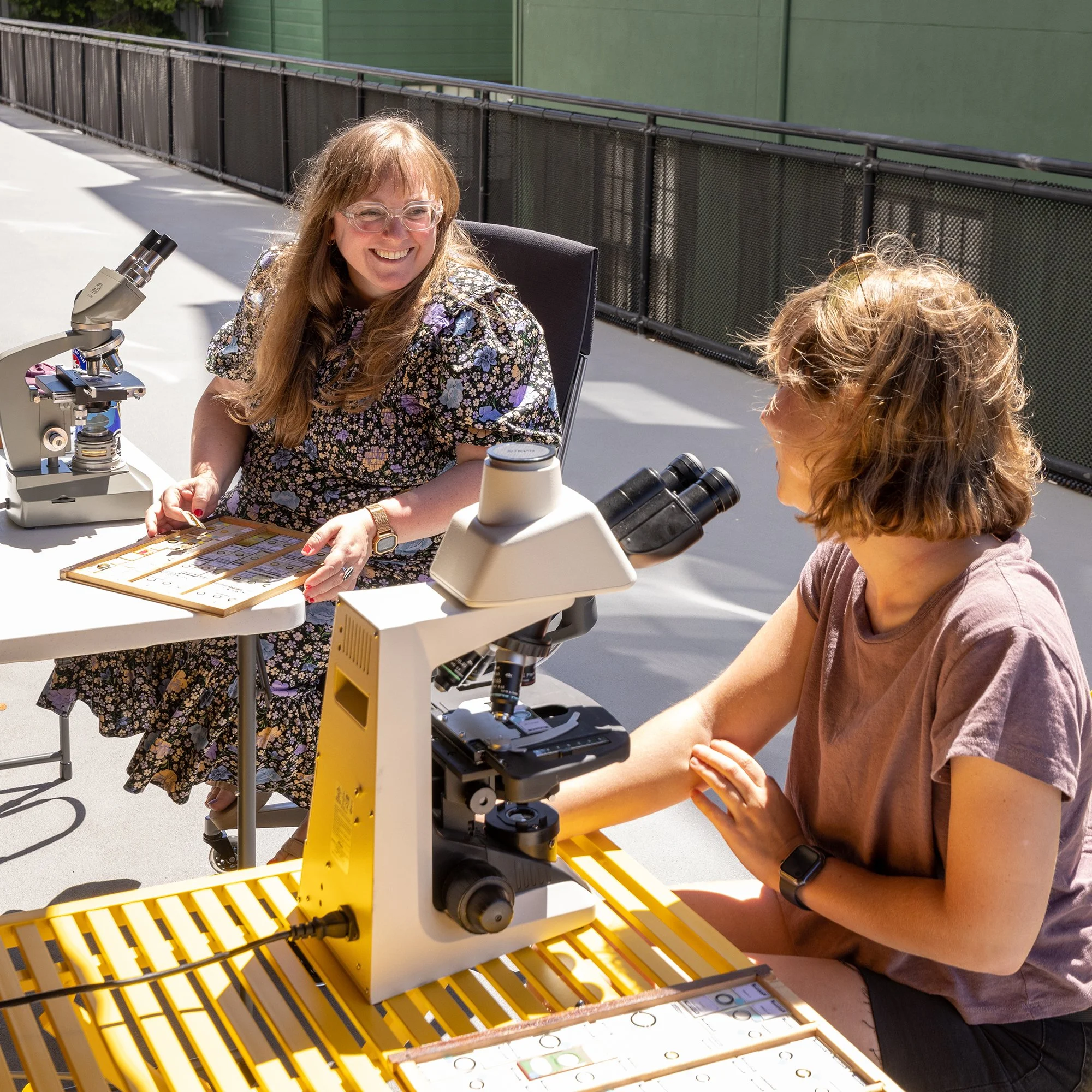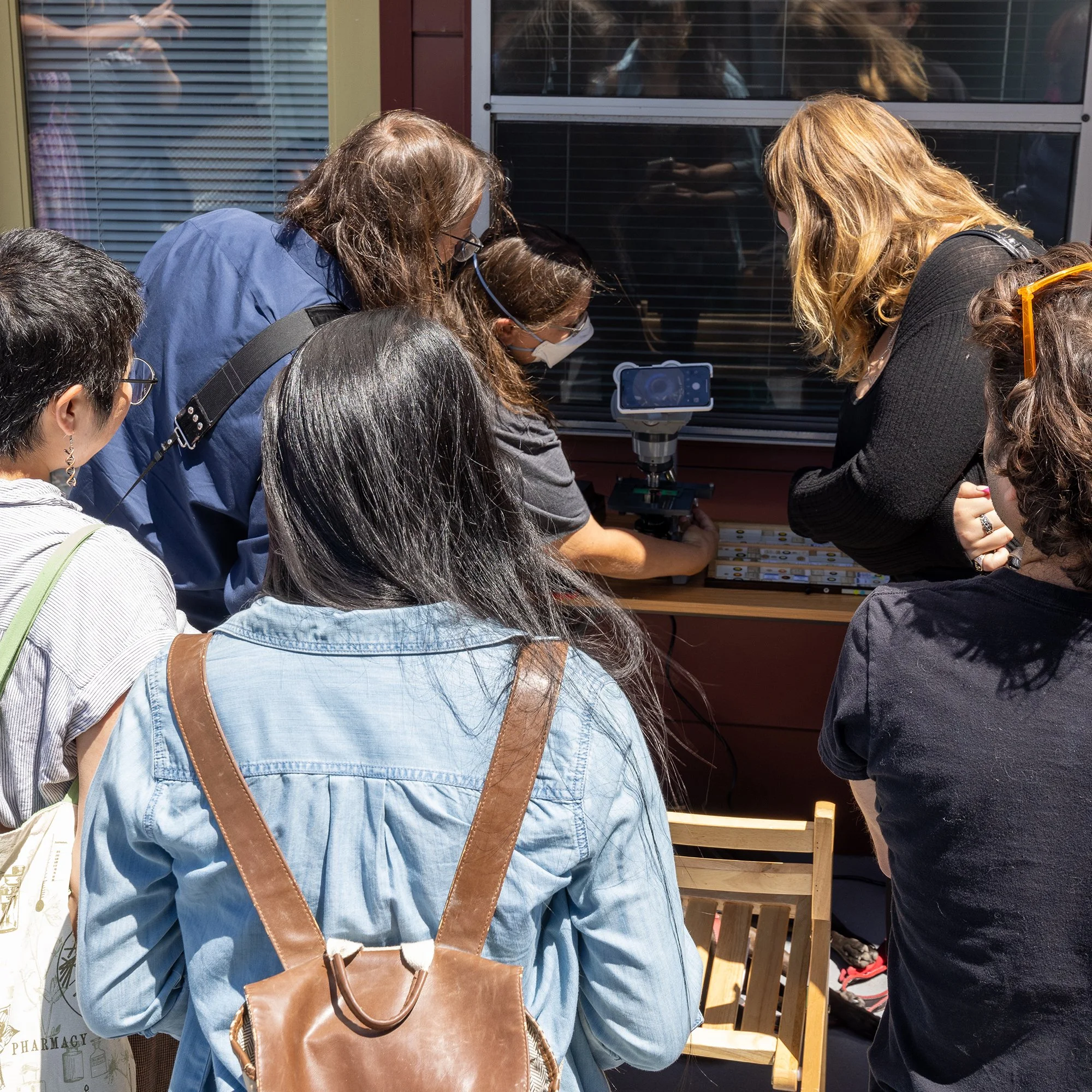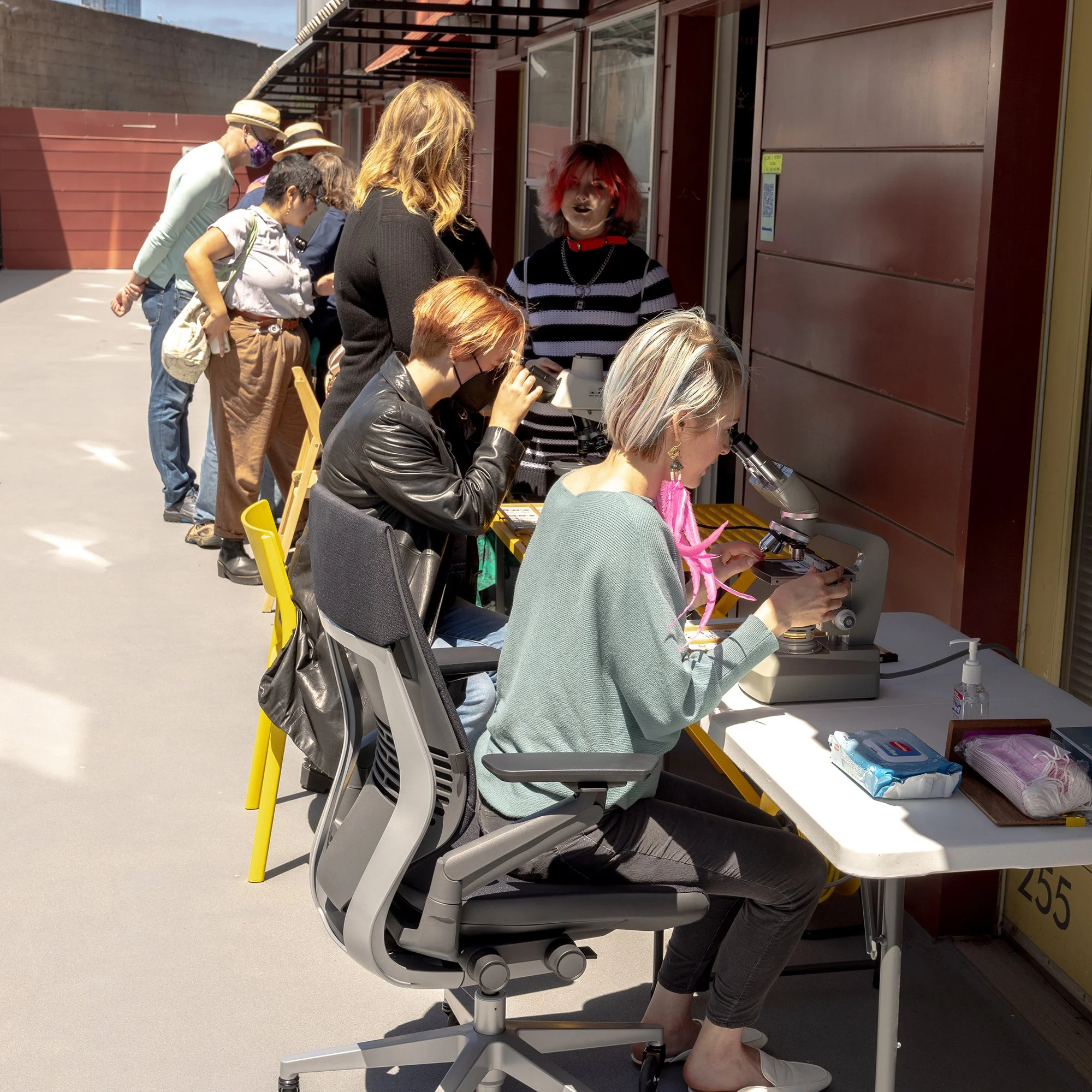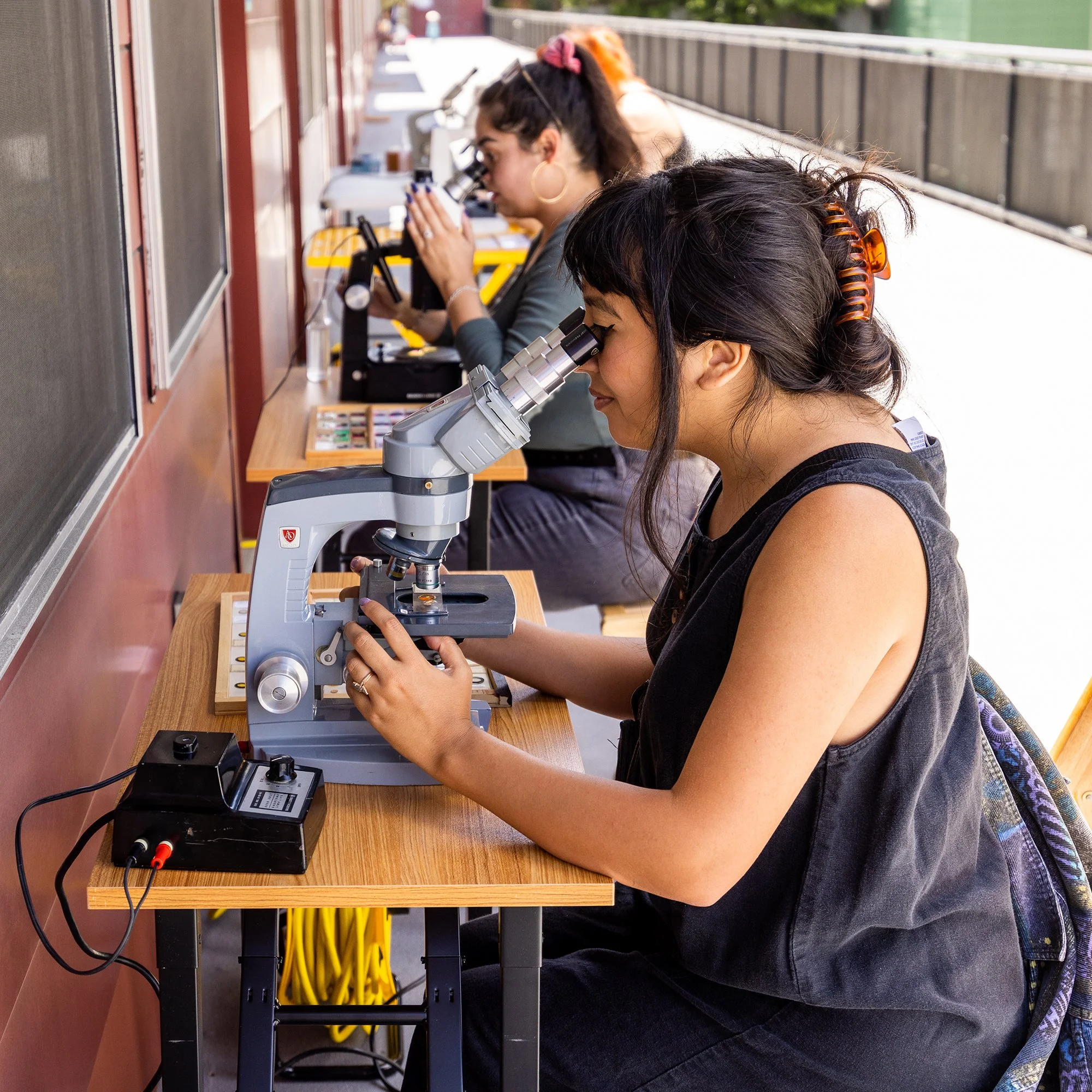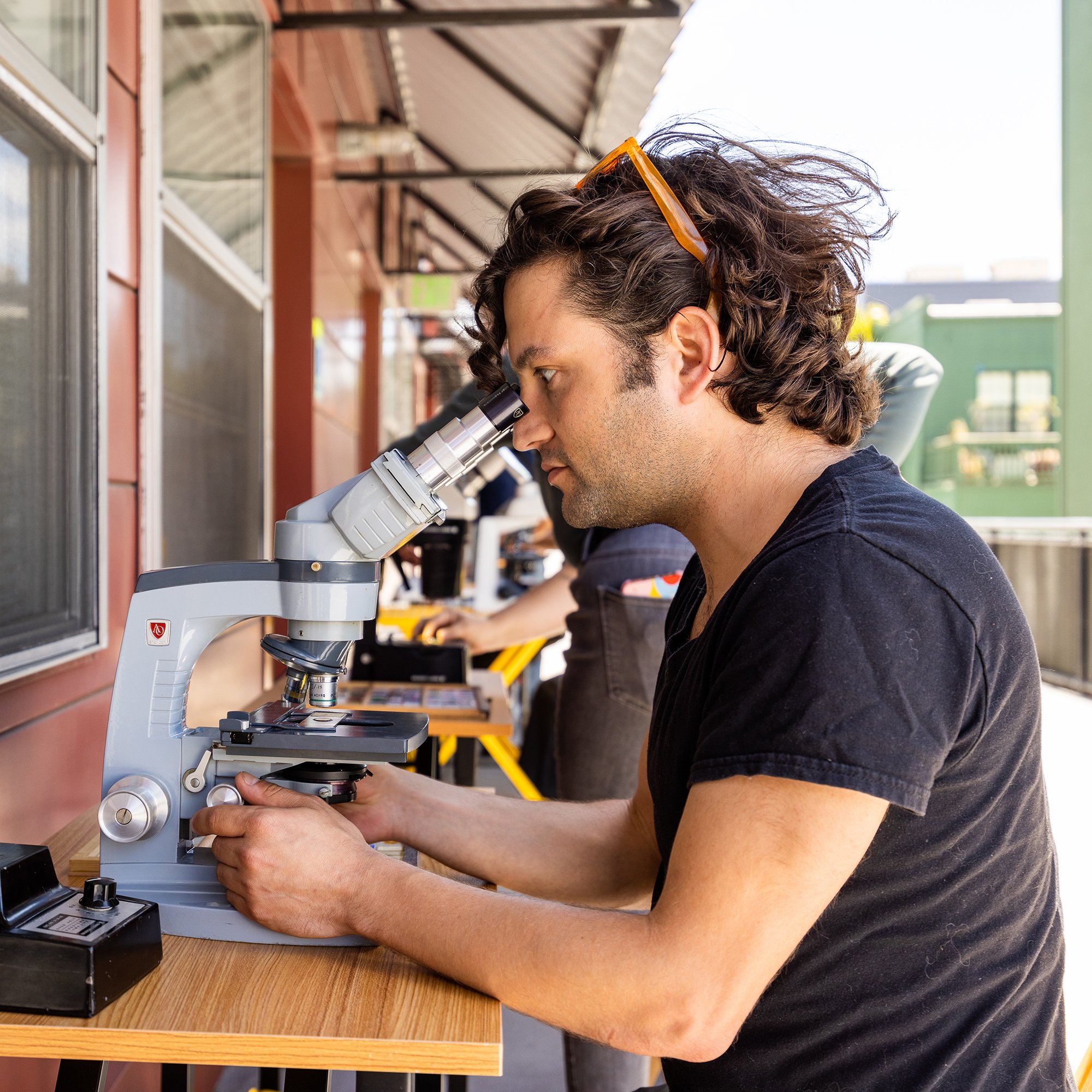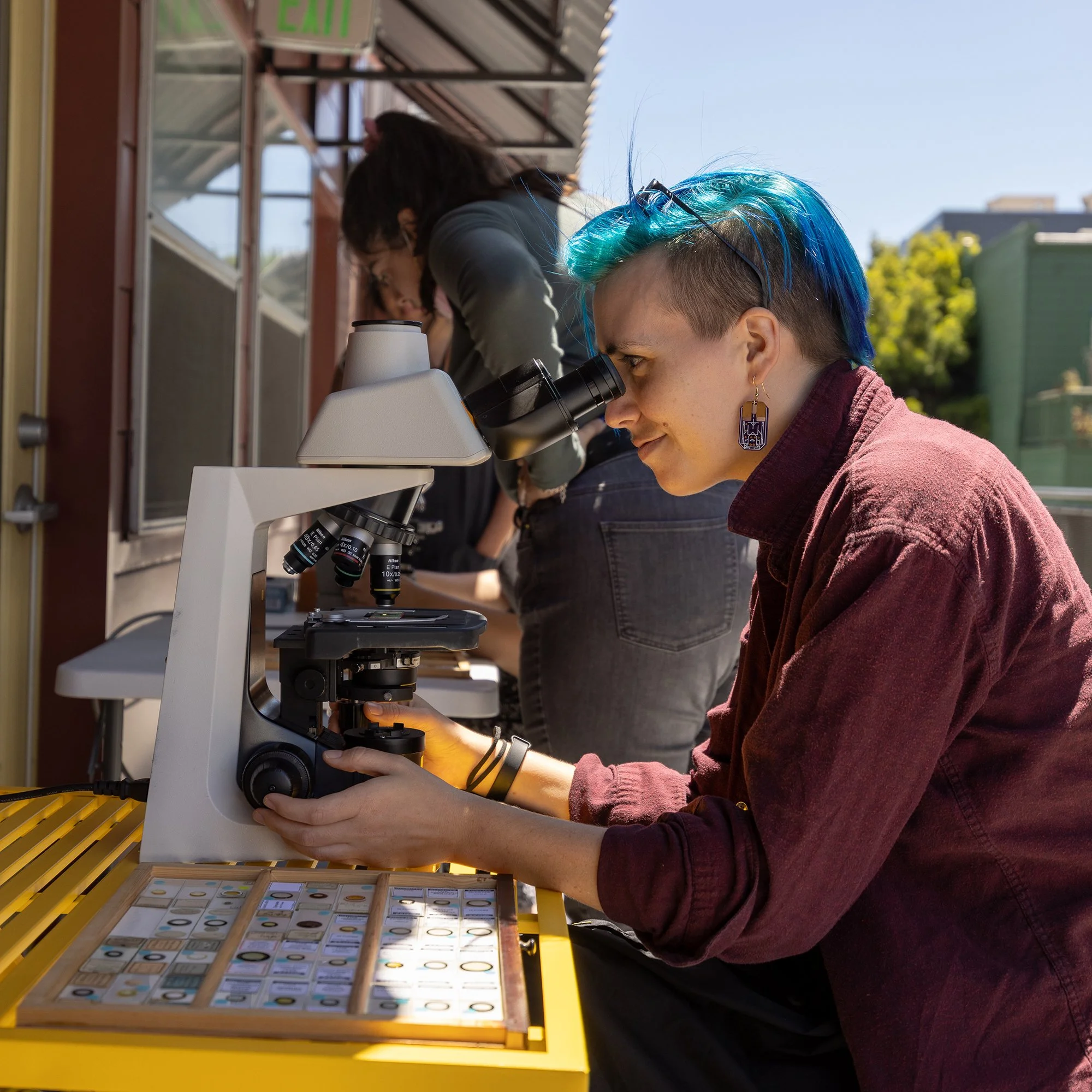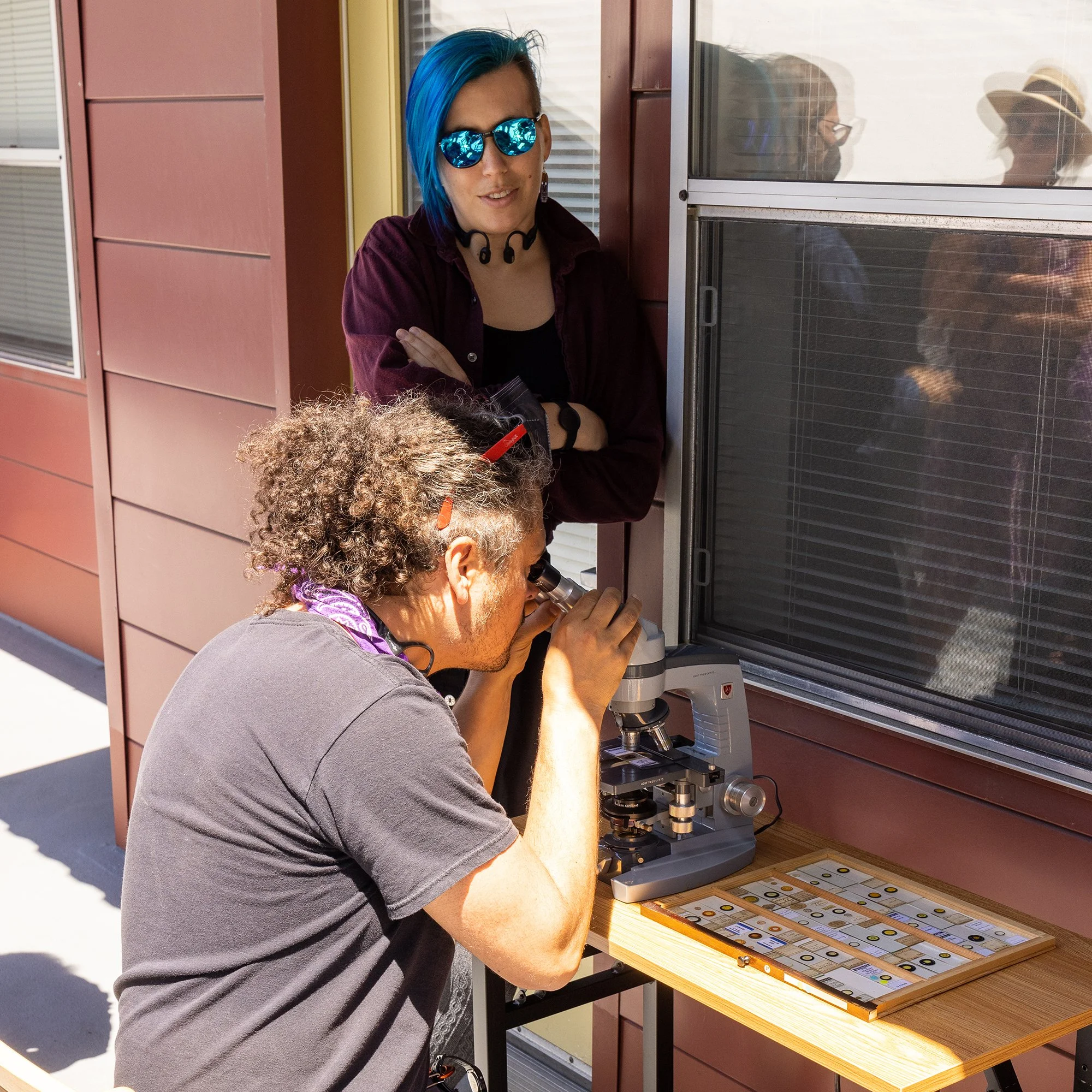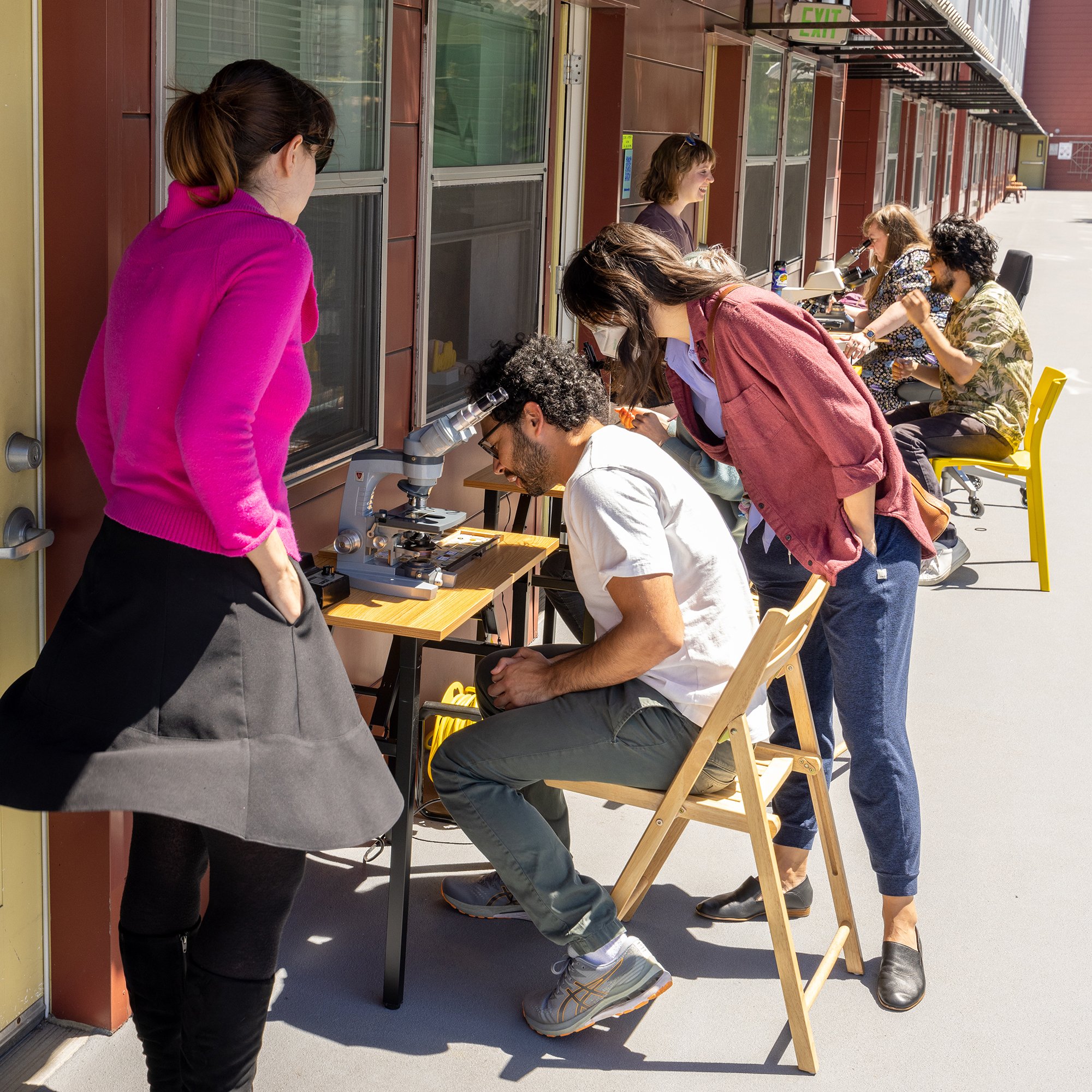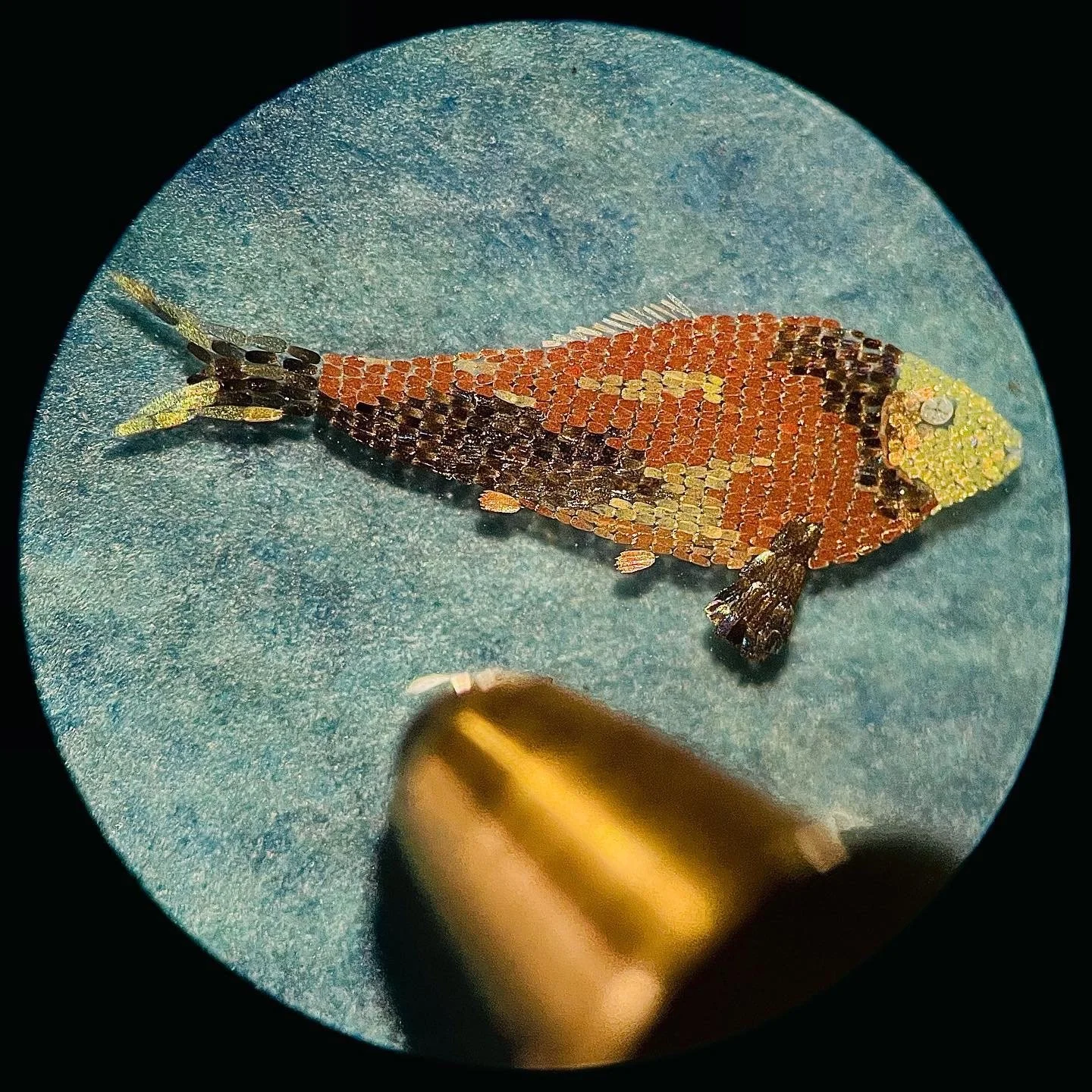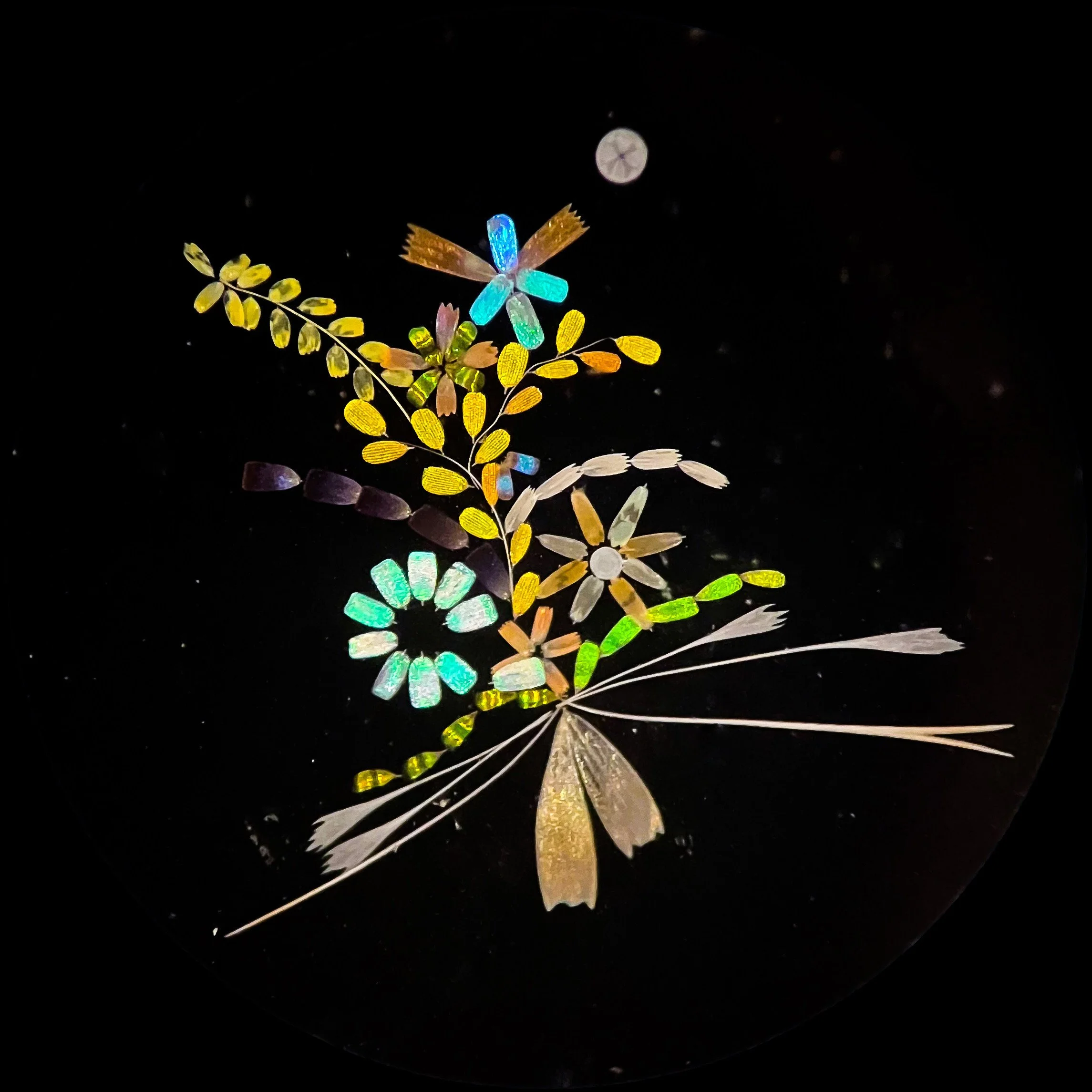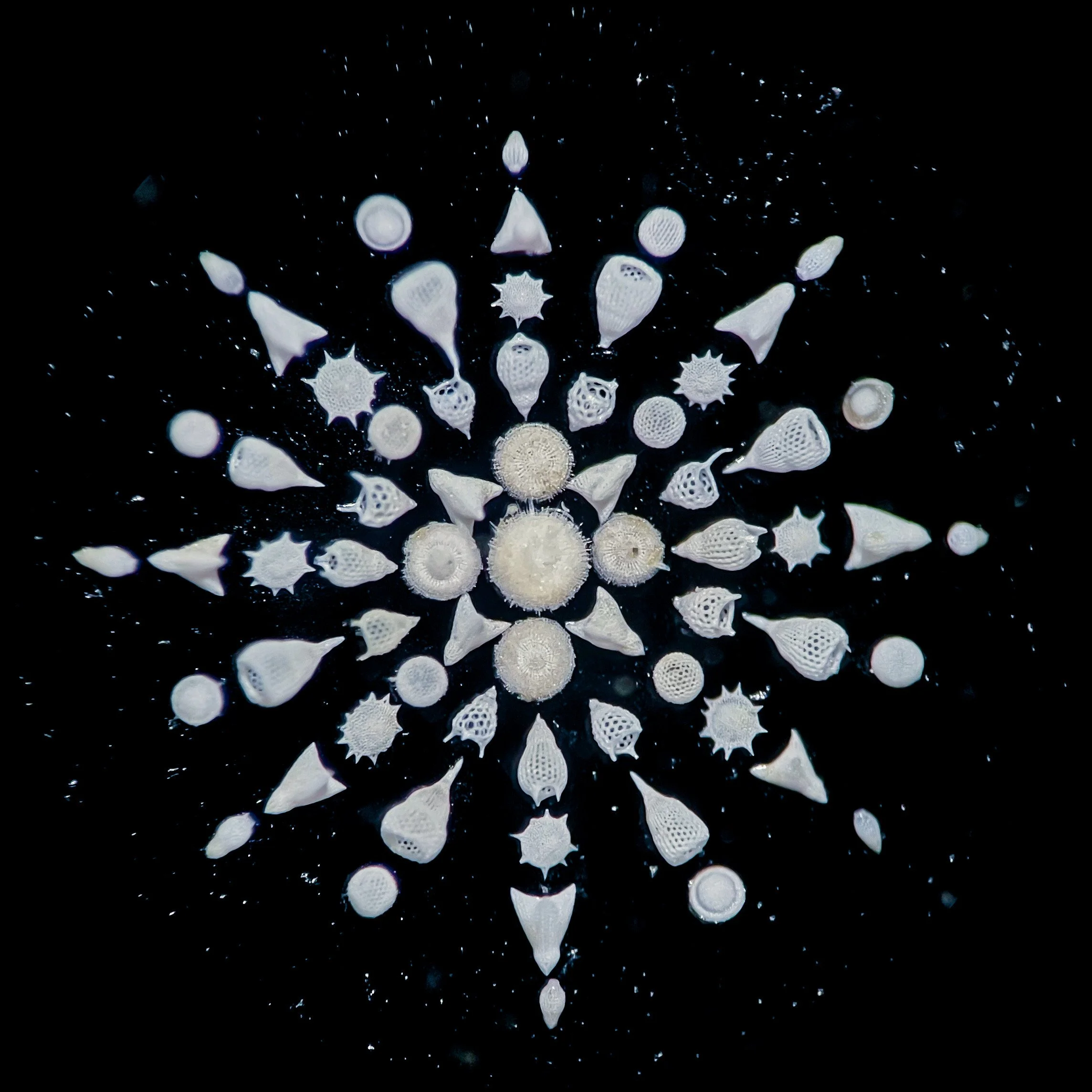Amazement at the Victorian Microscope Art Meetup
Last week, the San Francisco Microscopical Society hosted a Victorian Microscope Art meetup in the Mission district of San Francisco. The event was a smashing success and a wonderful opportunity to geek out with people from a wide range of disciplines spanning the arts, science, tech, and education. The event was filled with excitement and commotion as attendees took turns looking through the eyepieces of microscopes, each with a dedicated, distinct set of 36 curated slides to flip through. Every few minutes you would hear loud exclamations of “Woah!”, “No way!”, “Come here, you have to see this!”, and “Look at this one!”.
What exactly is Victorian microscope art? Microscopes during the Victorian era, in the mid-to-late 1800s, were a source of entertainment in addition to being used as scientific instruments. Pieces of art that could only be seen with a microscope were crafted by arranging tiny pieces of algae (diatoms), butterfly scales, and zooplankton (radiolaria) into intricate geometric patterns and pictures. Some modern-day microscopists continue to practice the art.
Earlier this year, the Society received a couple of generous donations of microscopic slides from the Victorian era, as well as some from the few modern-day microscopists who were still practicing the technique. One donation totaled nearly one thousand slides that had been thoughtfully collected over a lifetime by a father in the SF Bay Area that had recently passed away. The other was a set of two dozen slides that had been collected and exhibited by one of the San Francisco Microscopical Society’s earliest members, J.H. Wythe, in the 1870s, donated by his great-great grandson. The slides included diatoms arranged as a Christmas tree with presents, radiolaria placed in exquisite rosettes, butterfly scales placed precisely to form a wreathe of birds and flowers, and photographs only a millimeter tall in size, among many others. The microscopists who prepared these slides included W.A. Firth, J.D. Möller, Watson & Sons, Harold Dalton, Klaus Kemp, Brian Danton, and many others.
The mission of the Society is to be a focal point for people across all disciplines of both science and the arts, and what better way to do that than to share the wonder of this little-known art form with the public. The event was full of awe, joy, and smiles as people connected with one another, learned about microorganisms, and marveled at the beauty of nature demonstrated by careful craftspeople. Here’s just a few quick shots we grabbed through an iPhone camera to give you an idea of just how amazing this collection is – but take our word for it, they really need to be experienced in person to fully appreciate!
Event photos by Matt Biddulph.
